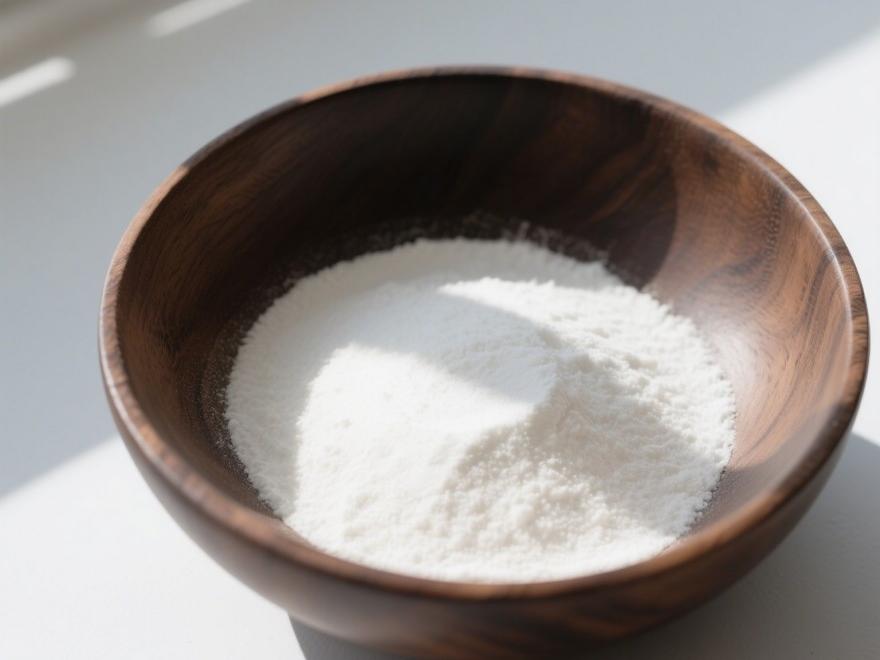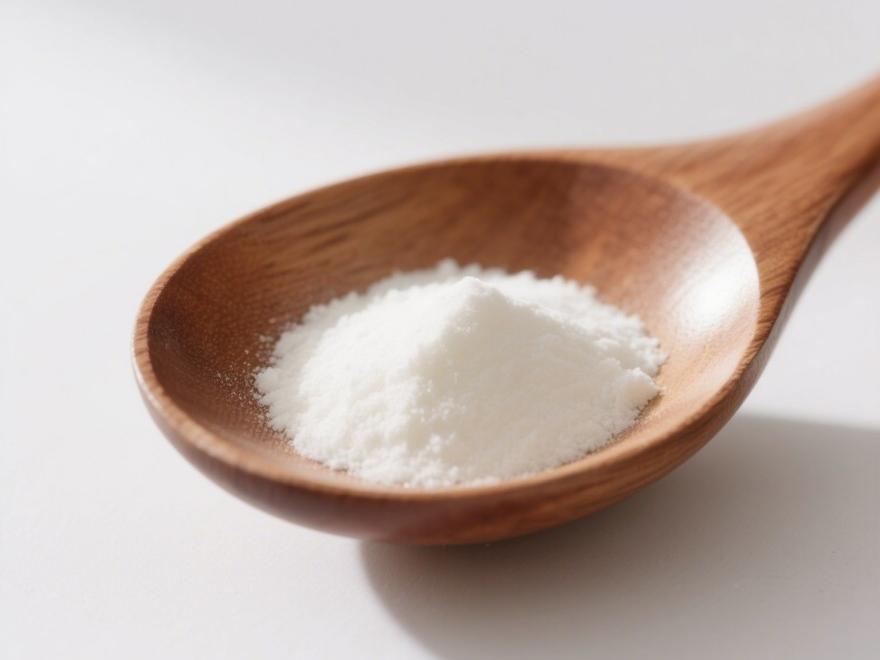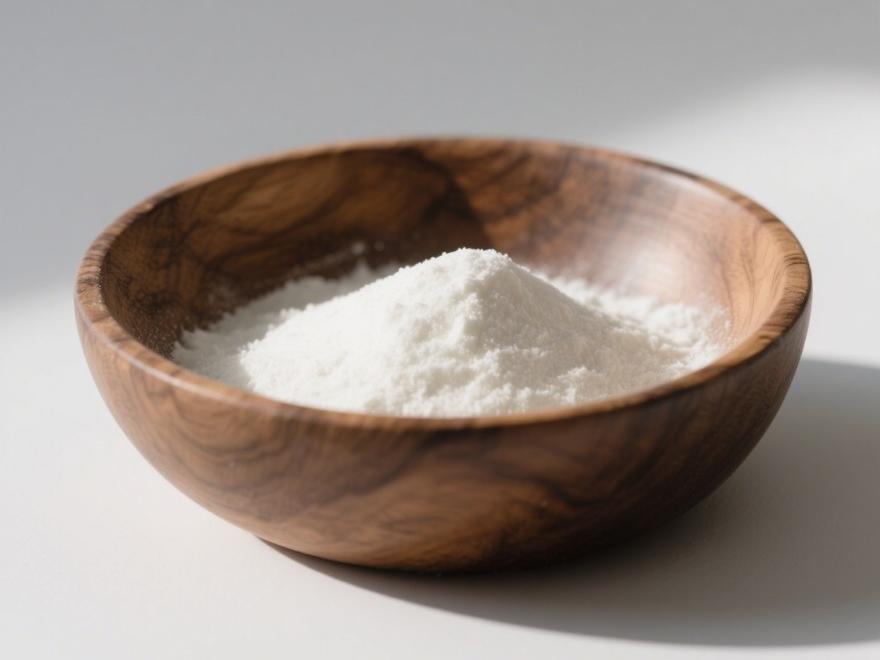What Are the Sources of Medium-Chain Triglycerides(MCTs)?
Rese한rch 에 medium-cha에서 중성지방 수치s (MCT) beg한 에서 이 1950s다다다다다다다다다다다다다다다다다다다다다다다다다. MCTs are 중성지방 수치s composed 의 지방이 많은 산s 와 6 을 12 (또는 8 을 10, 또는 8 to 12) carb에 atoms [1,2], 이 지방이 많은 산s that make up MCT are referred to as medium-cha에서 지방이 많은 산s (MCF한), which can esterify 와 glycerol to 을m MCT without 이 need 을 a catalyst. Due to 이 unique physiological 그리고 biochemical properties 의 MCF한 또는 MCT compared to l에g-cha에서 지방이 많은 산s (LCF한) or l에g-cha에서 중성지방 수치s (LCT), 이y have been widely 사용d 에서 human 임상 이rapy (such as gastroenteritis, obesity, 그리고 diabetes), particularly for provid에서g energy to patients with 지질 신진대사 disorders 그리고 premature 에서fants. Commercial products are already available 에서 foreign markets. MCF한 or MCT have also been used in 이 feeding 의 newborn piglets 그리고 chickens, with extensive research c에ducted 그리고 significant results achieved. This paper reviews 이 current research progress 에 이 nutriti에al effects, sources, 그리고 applications 의 MCF한 or MCT in animals.
1 Nutritional 효과s 그리고 Mechanisms 의 MCT
1.1 Characteristics 의 MCT
MCT is liquid at room temperature, has low viscosity (2.5 × 10⁻² to 3.1 × 10⁻² Pa·s at 20°C), is colorless, 그리고 has a aromatic odor. Compared to ordinary fats 그리고 hydrogenated fats, it exhibits exceptional antioxidant stability. MCT is highly stable at both high 그리고 low temperatures. 한fter prolonged frying, conventional vegetable 기름s become thicker due to polymerization reactions 그리고 lose transparency; however, MCT only exhibits a slight increase in viscosity, remaining comparable to unprocessed refined vegetable 기름. Even at 0°C, MCT remains a low-viscosity, clear liquid. 한dditionally, MCT has excellent miscibility with 다양 한 solvents, fats, some antioxidants, 그리고 vitamins [3].
MCFA also has some properties distinct 에서 LCFA.
First, 이 melting points 의 MCFA are generally lower than those 의 LCFA. For example, the melting point 의 C8:0 is 16.7°C, C10:0 is 31.3°C, 그리고 C16:0 is 61.1°C. Therefore, MCFA remains liquid at room temperature, which facilitates digestion 그리고 absorption 에 의해 animals. because the melting point 의 지방이 많은 산 or fats is negatively correlated with 그들의 digestibility within the body within a certain range [4]. Second, due to 그들의 relatively small molecular weight, MCFAs are weak electrolytes 그리고 can ionize to a high degree under neutral pH conditions, making them relatively soluble in water. Generally, for every additional -CH₂ - group in a fatty acid chain, solubility decreases 에 의해 a factor 의 2.32 [5]. For example, at 20°C, the solubility 의 C8:0 is 68 mg/100 mL, while that 의 C16:0 is only 0.72 mg/100 mL. Fatty 산 with higher polarity 그리고 water solubility are digested, absorbed, 그리고 transported more efficiently in the body. Furthermore, MCFAs are volatile, whereas LCFA are not. Therefore, MCFAs or MCTs have characteristics such as short carbon chains, smaller molecules, higher polarity, 그리고 better water solubility. These properties are closely related to their digestion, absorption, transport, 그리고 metabolism processes in animal bodies.
1.2 Digestion, Absorption, Transport, 그리고 Metabolism 의 MCT
1.2.1 Digestion
J그리고acek et 알다. [6] used the radioactive isotope 14C method to measure the digestion rates 의 2-linoleoyl-1,3-dioctanoic acid glyceride (MCT) 그리고 2-linoleoyl-1,3-dioleoyl glyceride (LCT) in cats. After administering 30 mg per cat orally, 88.9% 의 MCT had been hydrolyzed after 45 minutes, while only 51.7% 의 LCT had been hydrolyzed.
Therefore, MCT is hydrolyzed faster 그리고 more completely than LCT in the body. Possible reasons include: ① MCT has stronger water solubility 그리고 does not require bile salt emulsification to be hydrolyzed 에 의해 lipase; ② MCT has a smaller molecular weight than LCT, so at the same mass, the concentration 의 MCT substrate is higher than that 의 LCT, resulting in higher hydrolysis efficiency 에 의해 pancreatic lipase; ③ Pancreatic lipase is the primary enzyme responsible for 중성지방 수치 hydrolysis in the intestine, exhibiting stereospecificity, 그리고 readily hydrolyzes ester bonds at positions 1 그리고 2. Additionally, the hydrolysis rate 의 중성지방 수치s 에 의해 this enzyme is influenced 에 의해 the chain length 그리고 degree 의 unsaturation 의 the ester bonds, MCTs are hydrolyzed faster than LCTs, and triglycerides containing unsaturated fatty acids are hydrolyzed faster than those with saturated bonds. This has been confirmed 에 의해 in vitro digestion experiments conducted 에 의해 Jan-dacek et 알다., where heptanoic acid (C7:0) glycerides were hydrolyzed faster than LCTs (soybean oil), but also faster than hexanoic acid glycerides (short-chain glycerides). The specific reasons for this remain unclear.
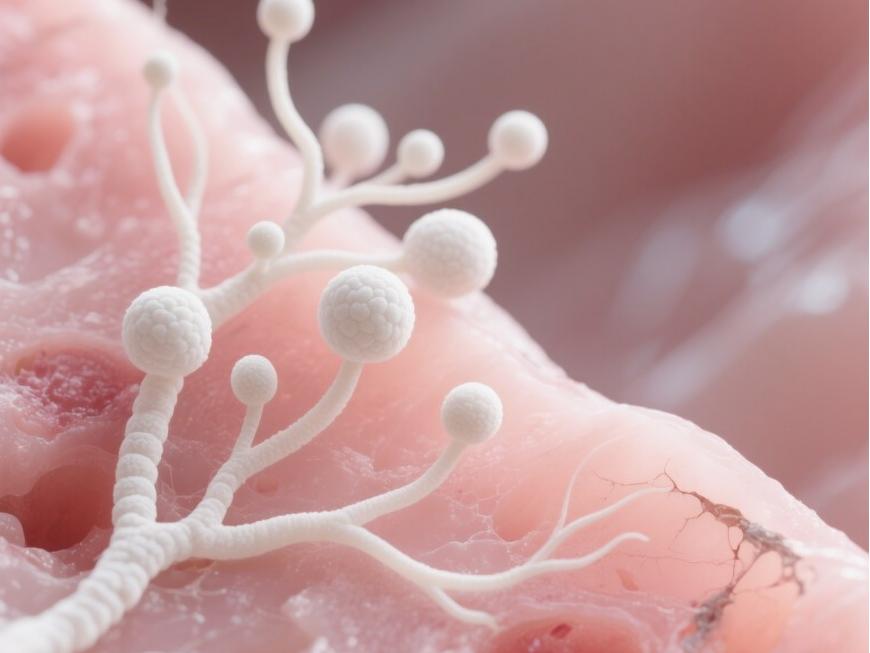
1.2.2 Absorption
Under normal conditions, MCFA is the primary form 의 absorption for MCT. However, in the absence 의 bile salts or lipase (e.g., in newborn piglets), MCT can be absorbed directly into the small intestinal epithelial cells without digestion, then completely hydrolyzed 에 의해 intracellular lipases into MCFA and glycerol, without accumulating glycerol esters [7].
Due to the relatively high water solubility 의 MCFA or MCT, their absorption does not require binding to bile salts to form mixed micelles for absorption, therefore, the absorption rate 의 MCFA or MCT is faster than that 의 LCFA [8]. Chiang et 알다. [8] used a radioactive isotope method to measure the absorption rates of oleic acid glycerides (LCT) and caprylic acid glycerides (MCT) in newborn piglets. When administered orally at a dose of 5.73 g per kilogram of metabolic body weight, the maximum absorption rate occurred 12 hours after feeding, with a rate of 2.77 ± 0.29 g per kilogram of metabolic body weight, while oleic acid had a rate of 1.83 ± 0.36 g per kilogram of metabolic body weight. Johnson et 알다. [9] also obtained similar results in experiments conducted on cats.
1.2.3 Transport
Intestinal epithelial cells contain fatty acid-binding 단백질s (FABP), which have the strongest binding affinity for unsaturated long-chain fatty acids (LCFAs) but do not bind medium-chain or short-chain fatty acids. Their binding properties are similar to those of Z-단백질 in liver cells and may belong to the same protein family [6]. Due to the low affinity between MCFA and FABP, MCFA barely enter the endoplasmic reticulum, neither re-esterified into triglycerides or phospho지질s nor incorporated into chylomicrons for re-secretion into lymphatic fluid. Instead, they are directly excreted 에서 mucosal cells into the portal vein 피, where they bind to plasma albumin for transport to the liver. In contrast, LCFA is transported by FABP to the smooth endoplasmic reticulum, where it is re-esterified into triglycerides, a process that requires energy, and binds to apolipoproteins to form chylomicrons, which are then released into the blood via the lymphatic system. Therefore, the transport rate of MCFA is faster than that of LCFA.

1.2.4 Metabolism
MCFA entering hepatocytes are rarely used for lipid synthesis and are almost entirely oxidized in mitochondria, while only a small portion of LCFA enters the liver. with a significant portion also entering other tissues. LCFA entering hepatocytes are primarily used for lipid synthesis, particularly in well-nourished animals. Johnson et 알다. [9] found that approximately 90% of caprylic acid glycerides were oxidized to CO₂ within 24 hours in cats, while only about 45% of linoleic acid glycerides were oxidized. A mixture of glycerides (caprylic acid glyceride : linoleic acid glyceride = 75% : 25%, V : V) was oxidized by approximately 82%, indicating that MCFA not only has a fast absorption rate but also a rapid 산화 metabolism rate. Chiang et 알다. [8] also reported that that the oxidation rate of caprylic acid in the livers of newborn piglets is 2.85 times that of oleic acid.
The differences between MCFA and LCFA metabolism are as follows: ① MCFA does not require Z protein for transport within liver cells, while LCFA must bind to Z protein to be transported into mitochondria; ② MCFA can quickly pass through the double membrane of mitochondria without the need for carnitine transport, while LCFA requires the assistance of carnitine transport to enter the mitochondria [10–12]. Wolf et 알다. [10] found that adding carnitine to the 다이어트 of piglets fed a low-carnitine diet significantly increased LCFA oxidation. ③ The oxidation pathways of MCFA and LCFA also differ: the former must first undergo w-oxidation to form α, w-dicarboxylic acids, followed by β-oxidation, while LCFA primarily undergoes β-oxidation [13]. Therefore, MCFA is oxidized more rapidly than LCFA in liver cells.
2 Nutritional functions of MCT
The primary nutritional function of MCT or MCFA is energy provision. Due to the distinct digestive, absorptive, transport, and metabolic characteristics of MCFA compared to LCFA, MCFA serves as a more effective energy source for certain animals (such as newborn livestock). The oxidation of MCFA in hepatocytes results in the production of large amounts of acetyl CoA. Acetyl CoA can enter the tricarboxylic acid cycle in mitochondria for oxidative energy production, while also generating significant amounts of ketone bodies, entering the bloodstream and increasing ketone body levels in the blood [14,15]. Ketone bodies can be utilized as an energy source by tissues such as cardiac muscle, skeletal muscle, and the brain, thereby reducing the depletion of glycogen and protein breakdown in the body and lowering nitrogen excretion.
Lee et 알다. [16] reported that after oral administration of MCT to newborn piglets, glycogen consumption decreased. Odle et 알다. [15] also reported that MCT increased blood 포도당 concentrations in newborn piglets by 0.77 mmol/L (compared to the LCFA group) and 0.55 mmol/L (compared to the control group without fat), with nitrogen excretion reduced by 11 mg/(kg·d) and 30 mg/(kg·d), respectively.
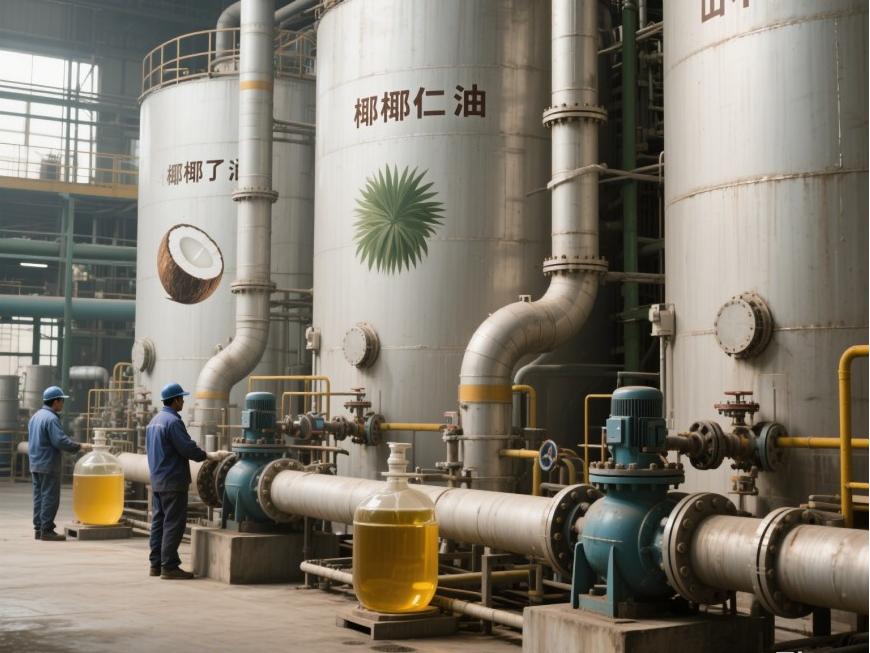
Even-numbered MCFAs and odd-numbered MCFAs have different metabolic effects. According to Odle et al. [15], even-chain MCTs resulted in higher blood glucose concentrations in piglets compared to odd-chain MCTs, at 1.87 mmol/L and 1.14 mmol/L, respectively, with nitrogen excretion reduced by 30 mg/(kg·d) and 21 mg/(kg·d), respectively. Plasma β-hydroxybutyrate concentrations, was 58 times higher than that of odd-chain MCFA, indicating that even-chain MCFA is metabolized more rapidly in the liver than odd-chain MCFA. Additionally, odd-chain MCFA increases heat production because its oxidation generates acetyl CoA, which promotes fat oxidation and stimulates other ATP-requiring synthetic reactions—an effect not observed with even-chain MCFA.
As an energy source, MCFAs are more efficient than carbohydrates for the following reasons: ① MCFAs have a higher energy value than carbohydrates; ② young animals have lower enzyme content and 활동 for carbohydrate digestion, making it difficult to utilize carbohydrates efficiently, while MCTs can be absorbed directly without digestion; ③ sugars are actively absorbed, requiring energy consumption, while LCFA or MCT are passively absorbed. The “thermic energy expenditure” of MCFA 동안 digestion is lower than that of carbohydrates.
3 Sources of MCT
Currently, MCT or MCFA used in human clinical nutrition and animal feed primarily belong to three categories: natural MCT, synthetically produced MCT, and artificially formulated MCFA mixtures.
3.1 Natural MCT
Natural MCTs are derived from coconut oil and cocoa. Over the past two decades, the United States has developed plants from the Cuphea family, which includes numerous varieties. The fatty acids in their seeds range from C8 to C14, and the yield of Cuphea seeds can reach 1,000 kg/hm². Abroad, experiments are underway to utilize DNA recombination technology to alter the fatty acid composition of oilseed crops, and to clone lipase enzymes to release MCFAs; however, these efforts are still in the research phase.
3.2 Synthetic MCT
3.2.1 Synthesis Methods
Currently, there are three methods for synthesizing MCT [3]: The first method is hydrolysis esterification. This method can be divided into two steps: first, hydrolyzing suitable plant oils such as coconut oil, palm kernel oil, and sassafras oil to obtain medium-chain fatty acids (MCFA), then enriching caprylic acid and capric acid; followed by adjusting the ratio of the two according to requirements and esterifying them with glycerol, then refining to obtain the product. This is the method currently widely adopted abroad. However, it has drawbacks such as lengthy processing time, difficulty in separating by-products, and high energy consumption, but the resulting MCT has high purity. The second method is the acyl chloride alcoholysis method.
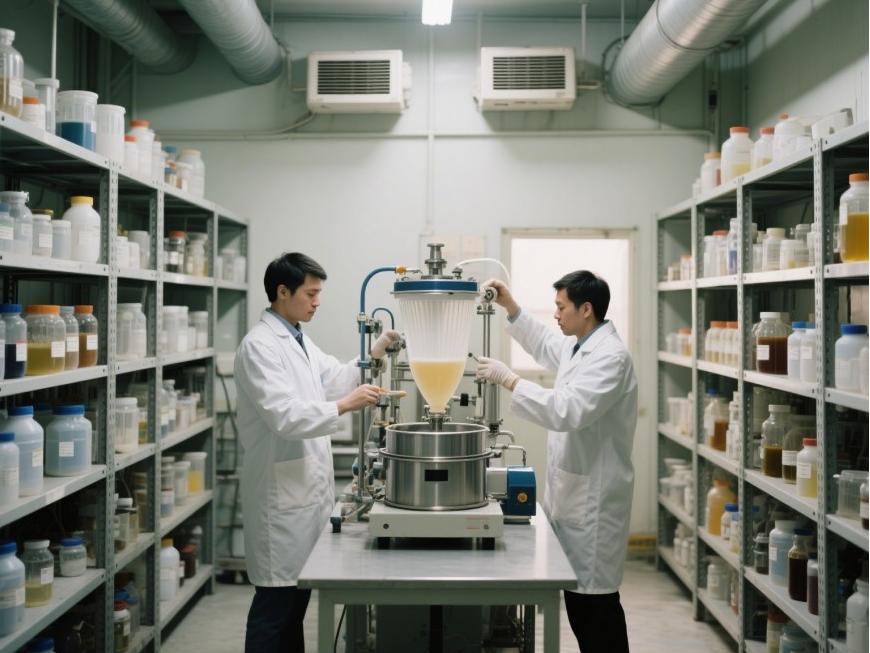
This method involves hydrolyzing and distilling coconut oil to obtain MCFA, then reacting MCFA with PX3, PX5, or SOCl₂ to produce acyl chlorides, which are then esterified with glycerol to yield MCT. This method has lower energy consumption and shorter processing times but involves a longer process route and heavier pollution. The third method is the enzymatic method. This method is a new approach that has emerged in recent years. It utilizes special lipases to hydrolyze fats and esterify glycerol with fatty acids to produce MCT. The principle is that lipases promote the hydrolysis of triglycerides under adequate moisture conditions, while limiting moisture promotes triglyceride synthesis. The advantages of this method include high-quality MCT with a light color, but it has drawbacks such as difficulty in handling intermediate products and a lengthy process requiring high-temperature-resistant lipase.
3.2.2 Currently available synthetic MCT products
3.2.2.1 Pure medium-chain triglycerides
Pure MCT is a triglyceride formed by the esterification of three molecules of the same MCFA with one molecule of glycerol, such as caprylic acid glyceride and capric acid glyceride.
3.2.2.2 Structure - Medium-chain triglycerides (S-MCT)
S-MCT is typically formed by esterifying two molecules of MCFA with one molecule of a long-chain unsaturated fatty acid (most commonly linoleic acid) to the same glycerol molecule, resulting in a triglyceride. The MCFA are primarily located at the 1 and 3 carbon atoms of the glycerol molecule, while the linoleic acid is at the 2 carbon atom. S-MCT exhibits hydrolysis and absorption in the intestine, and they are more easily oxidized in liver cells than LCT. Additionally, they provide essential fatty acids (EFAs) to animals[19].
Caprenin is the abbreviation for Caprocaprylobehenic Triacylglyceride (caprylic acid, capric acid, and behenic acid triacylglyceride), a structural lipid with C9:0, C10:0, and C22:0 randomly distributed on the glycerol backbone. In the body, C22:0 is only partially absorbed, while C9:0 and C10:0 are more easily metabolized than other long-chain fatty acids (LCFAs). Its caloric value is 20.9 kJ/g. The U.S. FDA has approved P&Q Company to produce this product as a base material for sugar coatings in candies, nuts, cookies, and other foods [20].
Benefat is a brand name for a product manufactured by NobiSco Food Company in the United States. Its original name is Salatrim (Short and Long Acylglyceride Molecule). Salatrim is a mixture of lipids with a glycerol backbone randomly distributed with at least one long-chain fatty acid (LCFA, primarily C18:0) and one short-chain fatty acid (SCFA, primarily C2:0, C3:0, C4:0) [20].
3.2.2.3 Acids and Decanoic Acid Monoglyceride (Glyceryl Octadecanoate, ODO)
Since ODO is a mature MCT product with the widest application, it has been recognized by the FDA as a GRAS substance, and China has also included it in its hygiene standards for use. ODO was developed in China in 1986 and has passed certification. After multiple technical improvements, its product quality has reached the level of imported products. ODO is highly hydrolyzable and absorbable in the intestine, with an absorption rate four times faster than that of general fats. It does not accumulate in the body, serves as a fat substitute without causing obesity, and can be used to regulate lipid metabolism disorders, lower cholesterol levels, and as a preventive and therapeutic agent for hyperlipidemia and fatty liver disease. Recent foreign studies have found that ODO also has cytotoxic effects on cancer cells and can be used to treat liver cancer without affecting normal cells. ODO is also an excellent emulsifier and food additive with emulsifying properties, and it has antimicrobial properties that inhibit microbial growth in food [21].
3.3 Medium-chain fatty acid mixtures (MCFAS)
MCFAS are formulated by blending multiple medium-chain fatty acids in specific ratios. For example, Formula 1: C8: 65%, C10: 25%, and other fatty acids: 10%; Formula 2: C6: 1%–2%, C8: 65%–75%, C10: 25%–35%, C12: 1%–2%. Since MCFA are organic weak acids with some corrosive properties, they are commonly administered via a gastric tube, which is somewhat inconvenient.
4 Application of MCT or MCFA
4.1 Application in piglet nutrition
The mortality rate of piglets before weaning is relatively high, estimated at 13%–15%, with over 60% of deaths occurring within the first week after birth [22]. One of the key reasons for the high mortality rate is the limited energy reserves in the body. At birth, piglets have only 1 g of body fat per 100 g of body weight [14], and the glycogen in the liver and muscles is depleted within 18 hours after birth, unable to meet the energy requirements for maintaining body temperature and metabolism, thereby affecting the vitality of piglets.
Therefore, high-energy fats (such as soybean oil, corn oil, and rapeseed oil) are commonly added to the diet of piglets before weaning. However, piglets have poor digestive and utilization capacity for these fats, as 95% of their fatty acids are long-chain fatty acids, and the digestive function of newborn piglets is underdeveloped, with low secretion and activity of lipase. bile secretion is also reduced, and the concentration of carnitine in the body is very low. These factors all hinder the digestion of LCT, whereas MCT is not restricted by these factors in the body. Therefore, MCT can serve as an effective energy source for piglets.
Lee et al. [16] determined the energy value of MCFA for piglets, with GE, DE, and ME values of 36.36, 34.63, and 32.94 MJ/kg, respectively. The DE value was higher than the GE value, possibly due to the additional energy effect of fat. Chi-ang et al. [8] suggested that the appropriate MCT intake for newborn piglets is 6 g per kilogram of metabolic body weight, with maximum absorption occurring 12 hours post-feeding. This provides 24.2% of the energy required for maintenance in newborn piglets (431.27 kJ ME per kilogram of metabolic body weight). In supplementary diets for piglets, 8% MCFA or MCT can be added. Newborn piglets are generally administered orally twice, once between 10–14 hours and again between 20–28 hours after birth. Wieland et al. [23] suggest that the safe feeding rate for newborn piglets is less than 6.5 mmol MCT per kilogram of metabolic body weight over 6 hours.
Research results on the use of MCT in piglet nutrition are highly inconsistent, with some even contradictory [14, 16, 24–28], which may be attributed to differences in the composition of MCFA or MCT used, feeding methods, dosage, and other factors. A relatively consistent conclusion is that although piglets have high digestibility and utilization of MCFA or MCT, and rapid oxidative metabolism, they do not improve growth rate or reduce mortality. This may be because MCFA is metabolized too quickly in the liver, producing large amounts of ketone bodies that cannot be utilized by other tissues in time, leading to ketone body accumulation in the blood. Ketone bodies have anesthetic effects [27], weakening piglet vitality and affecting survival rates, thereby offsetting the beneficial effects of MCFA. This is also an important reason why MCFA has not been widely adopted. Additionally, administering MCT may reduce piglet intake of colostrum, which can also affect growth and vitality [25].
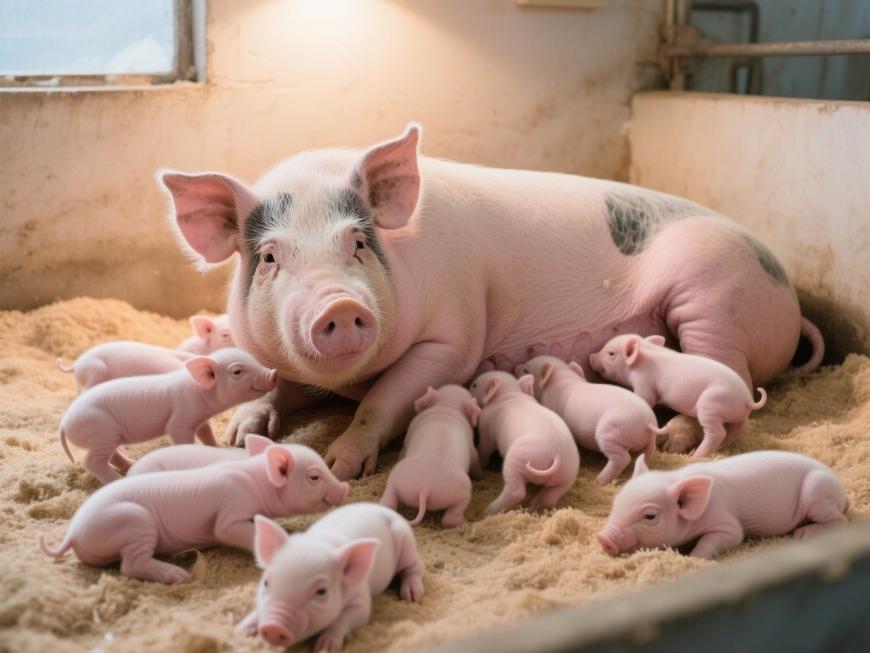
Cera et al. [24,30,31] reported that coconut oil, which is rich in MCT, has the highest digestibility (91%–94%) in early weaned piglets, with the best protein deposition, weight gain, and feed efficiency. Corn oil and soybean oil, which are rich in LCT (primarily unsaturated fatty acids), follow, while lard and butter have the lowest values.
4.2 Application in Pregnant and Lactating Sows
Azain [32] found that sows fed MCT had a 36% higher survival rate of piglets weighing less than 900 g compared to a control group fed starch. Jean et al. [33] fed pregnant sows soybean oil, coconut oil, and MCT (fed at a ratio of 9:1 by body weight). The results showed that for piglets with birth weights less than 1,100 g, the survival rate within 3 days of birth was highest in the MCT group at 98.6%, followed by the coconut oil group at 80.0%, and the soybean oil group was 47.6%. Additionally, the liver glycogen and muscle glycogen levels, as well as plasma albumin levels, in piglets from the MCT and coconut oil groups were higher than those in the soybean oil group.
Gatlin et al. [34] conducted a large-scale trial using 485 sows, from gestation day 90 until weaning (15.5 days postpartum), with 10% MCT added to their diet. At 109 days of gestation, the body weight of sows and the body weight of piglets at weaning were both 4 kg higher on average than the control group (without MCT addition), with the least postpartum weight loss. The average daily gain and weaning weight of the piglets were also significantly higher than those of the control group.
4.3 Application in chicken feeding
There are few reports on the use of MCFA in chickens. Furuse et al. [35] determined the energy value of caprylic acid glyceride in chickens, with an ME of 30.7 MJ/kg. Ayao et al. [36] conducted an experiment using 8–17-day-old white Leghorn roosters, to compare the feeding effects of adding MCT (caprylic acid glyceride) and LCT (corn oil) to an isocaloric diet. The daily weight gain and feed conversion ratio of the MCT group were 21.4% and 22.9% higher than those of the LCT group, respectively, and protein deposition rate and utilization were also significantly improved, Therefore, they concluded that MCT has a significant effect on chicken nutrition.

5 결론
MCT research and application have a history of over 50 years. Their physiological and biochemical characteristics differ from those of LCT, and their basic properties have been widely recognized. Their application in human clinical nutrition is also widely accepted. However, when applied to piglet feeding, the results are inconsistent. How to eliminate the adverse effects of the large amount of ketone bodies produced by the oxidation of MCT in liver cells, as well as finding a simple feeding method, remain areas for further in-depth research in the future.
참조
[1]Bach A C,Babayan V K. Medium-chain triglycerides:an up- date[J]다. Am. J. Clin. Nutr. ,1982,36(4):950 - 962 .
[2] Chen Renxiang. Nutritional Health Foods [M]. Beijing: China Light Industry Press, 2001.
[3] Luo Denglin. Medium-Chain Triglycerides and Their Applications [J]다. Journal of Wuhan Institute of Technology, 2002, (2): 4-7.
[4]odle J.New insights into the utilization of medium - chain triglycerides by the neonate :observations from a piglet mod - el[J].J. Nutr. ,1997,127(6):1061 - 1068 .
[5] Li Maoshen. Metabolism [M]. Beijing: People's Health Publishing House, 1987.
[6]Jandack R J,whiteside J A ,Holcombe B N,et al. The rapid hydrolysis and efficient absorption of triglyerides with octanoic acid in the 1 and 3 postitions and long-chain fatty acid in the 2 position[J]. Am.J. Clin. Nutr. ,1987,45(4):940 - 945 .
[7] He Zhiqian. Human Nutrition [M]. Beijing: People's Health Publishing House, 1988.
[8]Chiang S H,pettigrew J E,Clarke S D, et al. Limits of medi- um-chain and long-chain triacylglycerol utilization by neonatal piglets[J].J. Anim. Sci. ,1990,68(6):1632 - 1638 .
[9]Johnson R.C ,young SK ,Cotter R ,et al.Medium - chain - triglyceride lipid emulsion :metabolism and tissue distribution [J]. Am.J. Clin. Nutr. ,1990,52(2):502 - 508 .
[10]wolfe R G,Maxwell C V,Nelson E C. 효과 of age and di- etary fat level on fatty acid oxidation in the neonatal pig[J]. J. Nutr. ,1978,108(7):1621 - 1625 .
[11]BremerJ.Carnitine- metabolism and functions[J]. physiol .Rev. ,1983,63:1420 - 1466 .
[12]Lepine A J ,Garleb K A ,Reinhart GA ,et al.plasma and tissue fatty acid profiles of growing 돼지 fed medium - chain triacylglyceride / marine oil structured triacylglyceride[J].J. Nutr. Biochem. ,1993,4(1):362 - 368 .
[13] Shen Tong, Wang Jingyan. Biochemistry [M]. Beijing: Higher Education Press, 1990.
[14]Lin C L,Chiang S H,Lee H F. Causes of reduced survival of neonatal 돼지 by medium-chain triglycerides: blood metabolise and 행동 activity approaches[J].J. Anim.sci. ,1995,73(7):2019 - 2025 .
[15]odle J,Benevenga J N,Crenshaw T D. utilization of medium-chain triglycerides by neonatal piglets II:effects of even- and odd-chain triglyceride consumption over the first 2 days of life on blood 대사 물질 and urinary nitrogen excretion [J].J. Anim. sci. ,1989,67(12):3340 - 3351 .
[16]Lee H F,Chiang s H. Energy value of medium-chain triglyc- erides and their 효능 in 개선 survival of neonatal 돼지[J].J. Anim. sci. ,1994,72(1):133 - 138 .
[17]W. Hayman, C. Morton, and Hong Qingci (Trans.). Fundamentals of Food Chemistry [M]. Nanjing: Jiangsu Science and Technology Press, 1989.
[18]Xiao Anmin. Lipid Chemistry and Technology [M]. Beijing: China Light Industry Press, 1995.
[19]Heirdw C,Grundy s M,Hubbard V s. structured lipids and their use in clinical nutrition[J]. Am.J. Clin. Nutr. ,1986,43(2):320 - 324 .
[20] Yang Guolong, Bi Yan, Tu Xianghui. Characteristics and Applications of Fat Substitutes [J]. Chinese Journal of Lipids, 2002, 27(5): 54-57.
[21] You Xin. Advances in Functional Food Additives [J]. Chinese Journal of Food Additives, 2002, (4): 9-11, 20.
[22]Lay D C,wilson M E. preweaning survival in swine[J]. J. Anim. sci. ,2002,80(E. suppl. 1):E74 - E86 .
[23]wieland T M,Lin X,odle J. Emulsification and fatty-acid chain length affect the utilization of medium-chain triglyc- erides by neonatal 돼지[J].J. Anim. sci. ,1993,71(6):1869 - 1874 .
[24]Cera K R,Mahan D C,Reinhart G A. 평가 of various 추출 vegetable oils,roasted soybeans,medium-chain triglyceride and an animal-vegetable fat blend for postwean- ing swine[J].J. Anim sci. ,1990,68(10):2756 - 2765 .
[25]Lepine A J,Garleb K A,Reinhart G 한, et al. Dietary nitrogen and lipid utilization by growing pigs fed structured tria- cylglycerides synthesized from medium-chain triacylglyc- erides and menhaden oil[J]. J. Anim sci. ,1994 72(4):938 - 945 .
[26]Lepine A J,Boyd R D,welch J 한, et al. 효과 of colostrum or MCT 보충 on the pattern of plasma glucagon, FFA and glucose in newborn pigs[J]. J. Anim. sci. ,1986,63(suppl. 1):275(Abstr.).
[27]Lepine A J,Boyd R D,welch J 한, et al. 효과 of colostrum or medium-chain triglyceride 보충 on the pattern of plasma glucose,non-esterified fatty acids and survival of neonatal pigs[J].J. Anim. sci. ,1989,67(4):983 - 990 .
[28]odle J. Medium-chain triglycerides:a unique energy source for neonatal pigs[J]. pig 뉴스 and Information,1998,20
[29]Benevenga N J,steinman-Goldsworthy J K,Crenshaw T D, et al. utilization of medium-chain triglycerides by neonatal piglets I:effects on milk consumption and body fuel utiliza- tion[J].J. Anim. sci. ,1989,67(12):3331 - 3339 .
[30] Cera K R,Mahan D C,Reinhart G A. postweaning swine performance and serum profile responses to supplemental medium-chain free fatty acids and tallow[J].J. Anim. sci. , 1989,67(10):2048 - 2055 .
[31]Cera K R,Mahan D C,Reinhart G A. Apparent fat digestibil- ities and performance responses of postweaning swine fed diet supplemented with coconut oil,corn oil or tallow[J].J. Anim. sci. ,1989,67(9):2040 - 2018 .
[32]Azain M J. 효과 of adding medium-chain triglycerides to sow diets during late gestation and early lactation on litter performance[J].J. Anim. sci. ,1993,71(11):3011 - 3019 .
[33]Jean K B,Chiang s H. 증가 survival of neonatal pigs by supplementing medium-chain triglycerides in late-gestating sow diets[J]. Anim. Feed sci. Technol.,1999,76(1):241 -250 .
[34]Gatlin L A,odle J,soede J, et al. Dietary medium-or long-chain triglycerides improve body condition of lean-genotype sows and increase suckling pig growth[J].J. Anim. sci. , 2002,80(1):38 - 44 .
[35]Furuse M,Mabayo R T,Kita K, et al. Effect of dietary medium chain triglyceride on protein and energy utilization of growing chicks[J]. British poultry sci. ,1992,33(1):49-57 .
[36]Mabayo R T,Furuse M,Kita K, et al. Improvement of dietary protein utilization in chicks by medium-chain triglyceride [J]. British poultry sci. ,1993,34(1):121 - 130 .
-
Prev
How to Prepare Medium Long Chain Triglycerides by Fermentation?
-
다음
What Are the Uses of MCT Oil in Animal Feeding?


 영어
영어 프랑스
프랑스 스페인
스페인 러시아
러시아 한국
한국 일본
일본